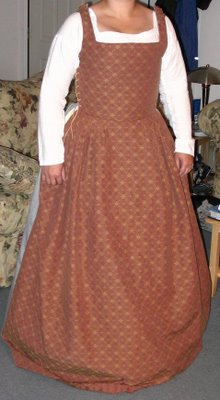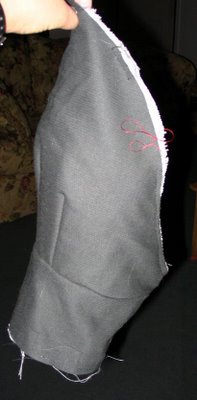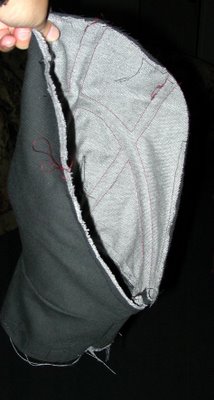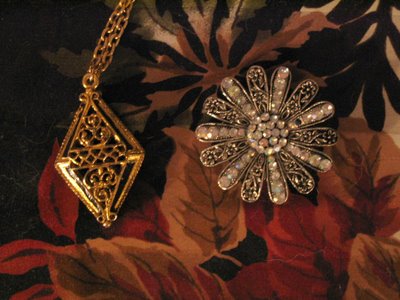Apparently my bad camera karma continues. I believe I mentioned yesterday that I'd taken pictures of my kirtle-in-progress over the weekend. Well, last night I realized that I'd made the neckline square instead of arched, which would have been ok normally, but not so good for the planned Tudor costume. So I did some minor surgery on the bodice and gave it an arched neckline. I decided that it was worth lacing it up and snapping some replacement photos. Sadly, those photos were so similar that when I finally looked at what I'd saved, I realized that I'd managed to delete all the new ones, leaving only the old ones. Which I present below, since I'm not excited about dressing up again for the same pictures a third time! Just imagine that the neckline has an upward arch, as it now does. And, um, also imagine that the straps are sewn together and that it has a hem.

The kirtle is made primarily of a cotton fabric with a diamond/flower pattern woven in. I'm rather fond of this fabric, as I bought it with Julie on a day-long fabric expedition. I'm pretty sure it was meant to be made into something else at the time, but no matter.

The back of the skirt is made of a very heavy cheap grey cotton (the bodice is lined and interlined with the same stuff actually). The idea here is that the back of this will not be showing anyway, so why not be frugal. Very period that. I'll be adding a wide band of the patterned fabric to the back at the bottom in case the overgown pulls up, but I need to cut out the sleeves first to determine how much width I have left for that. This idea may be found in both Janet Arnold's Patterns of Fashion and also the new Tudor Tailor book.
The first outfit this kirtle is going to support will be a loose gown, based on a 1570's-80's black velvet gown out of Patterns of Fashion, like so:

I've wanted this gown for years. The original was worn over a loose kirtle, which was probably very handy if one was, say, breeding. As I'm not, I decided it could go over a fitted kirtle. Indeed, sometimes these were worn over full doublet-style gowns and whatnot, but that would be entirely too hot for Virginia!
This gown will be made of a lightweight dark grey wool flatlined with more of that ugly heavy grey cotton as in the kirtle above. The plan is to baste those two layers together, apply the decoration (bands of black velvet and satin cord), then stitch in a lining of fine grey linen. I hope it works!











